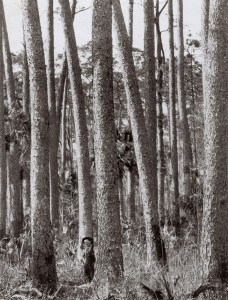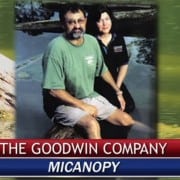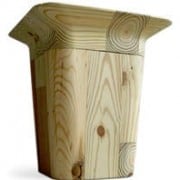A Tree Named George
By Jack Culpepper, USDA Forester

With the sawmill buzzing in the background, a tall cleanly-dressed forester caught my attention as he explained that the huge modern-day equipment that stretched out before us was being used to selectively harvest the less vigorous and diseased trees from a 45-year old longleaf pine stand, and that these actions promoted natural conditions that exist within mature longleaf forests; furthermore, he noted that the proceeds from this timber would be used to acquire land that would become a permanent addition to the refuge, and thereby be permanently conserved for future generation of Americans. It sounded too good to be true to be trading weakened and diseased timber for permanent conservation, but the continued growth of these forests provide exactly that … and more as I would soon learn.
I listened as the forester carefully explained how these selective thinnings manage the amount of sunlight that reaches the forest floor and thereby reestablish a varied herbaceous layer. The resultant grasses and forbs then join forces with the flammable needles and cones of the longleaf pine, and together perpetuate the fires that are the lifeblood of this ecosystem which maintain a broad diversity of life across the landscape. It was all very interesting, but my mind continued to be drawn to the buzz of the sawmill.
I would soon learn that the subject of this buzz was a large longleaf pine that I shall call George. George was 322 years old, yet even at this age, might have lived hundreds more. The gentle giant had fallen in the year of 2010 due to activities that had begun in the early 1900’s when George had been tapped for turpentine, a process that included the establishment of a box-cut at George’s base; this box-cut would fill with the plentiful resins that flowed in George’s cambium layers and be collected and used in a growing naval-stores industry of the south.
George was at that time mature and capable of providing copious amounts of resins, yet his days had begun much earlier in 1688, when the gales of November blew George, then only a winged-seed, free of his parent tree. George landed some distance away on a barren patch of sand among the wiregrass. As nutritious as he was; the turkey, deer, quail, squirrels and many other forest dwellers passed him by somehow. Soaked from the gale’s rains, George quickly began the process of absorbing that moisture and breaking free of his protective jacket. Before the ground moisture could dry, George had tapped out of his seed coat and used his nutritious packed lunch to begin the rooting process that would anchor him for more than three centuries
During those centuries, George would serve the forest inhabitants in a variety of ways including the Native American people that lived among the forest inhabitants. All depended upon plants and animals with which George had arranged an agreeable and lasting relation with fire. With all being calm for centuries, the nature of his service to neighbors would change abruptly with the coming of a new people as the forests began to fill with men, mules and wagons needed to supply a growing lumber and naval stores industry. Because George was not as tall and straight as some of his neighbors, he was spared the saw, and instead of contributing timber would share his plentiful and wonderful resins which these newcomers eagerly sought. For years he yielded the terpenes, but the process left George deeply scarred, and in a fire forest, this condition was a dangerous thing.
It had all begun in 1912, when a young man cut through George’s cambium layers and excised a box-cut from which George would faithfully supply his resins; he gave plentifully to the cause for years, then as suddenly as it had begun, it ended, and George was left to enjoy the quietness of a newly formed wildlife refuge in 1939 established during the Roosevelt administration. America’s first National Wildlife Refuge had been established under a different U.S. President of the same sir-name, when then Theodore Roosevelt began the process of conserving these rare and unusual places. Likewise FDR, continued the process of conserving lands for future generations of Americans.
These actions gave reprieve for George whose scars would begin to temporarily heal, and he would continue to grow ever broader and more dominant in the landscape. Yet as George well knew, fire was a natural and repeated occurrence driven by the summer storms where the deep-rooted longleaf pine would court the lightning and begin frequent fires that perpetuated the species and ecosystem in which it thrived. And as comfortable as he had been for centuries, George‘s scars left him susceptible to damage from the flames that he could have otherwise repelled easily.
Despite the close calls over the years that followed, George was able to withstand the low-intensity flames generated by the grasses and herbs that surrounded and protected him from fires of greater intensity. Until 2010 his fortune ran, and on March 15 of that year, the day came when the wind direction would drive the forest’s flames in a manner that would finally penetrate George’s scars sufficiently to end his life.
The giant that had stood for centuries now fell powerfully to the ground where he lay prostrate, yet his immensity would not soon vanish, and his days of service were not over. Many of the woodland creatures would continue to find food and haven among the mass of wood and bark now available to them as the least of these, the bacteria, fungi and insects, began the processes that would recycle George into the wild things that he had always sheltered, and of which he was a part … all connected as different forms of the same life force.
In death, whether George stood or fell, many forest denizens would benefit for years to come; his physical majesty diminished from some perspectives, yet enhanced from others as varied creatures found food and shelter. And in October 2010, the refuge’s local forester would consider these values before deciding that George may yet have another way to share. The forester decided that a part would remain for the woodland creatures, and that George‘s major timber would be removed and sawn as a demonstration for the refuge‘s visitors.
For decades a local family had assisted the efforts of conservation at the Carolina Sandhills NWR by extracting salvage timber as called upon by the refuge. In 2010, that responsibility fell to a man named Roosevelt Segars, a third generation logger whose father before him had also assisted conservation efforts at the Carolina Sandhills NWR. George’s bulk would strain Roosevelt’s equipment, but the sawing and delivery were nonetheless made available to the waiting sawmill. And as George first rode the truck, then the rails of the sawmill that day, he thought it was all over … what further good could come of him he wondered? It seemed his final day had come and all was ended. He had witnessed this sawing spectacle many times in the forest as his relatives and neighbors had one by one been removed, but he never understood why, and stood in silence as he watched them being carried far away. But as George listened to the sawyer that day, he began to see his death in a new light and to understand that in death there was the potential to continue to provide for others; to continue to share of himself as he had throughout his life, always giving, yet now in a different way.
And as a visitor to the refuge, I listened to the sawyer as he discussed the potential for George. Like George, I now understood, George was not ending, but beginning a new journey that would take him to a college in Charleston, SC where he would be used to teach skilled wood crafts, and even more wonderful, he had the distinct chance of supplying support posts for an orphanage project the college was conducting. What bliss George felt as he realized that life and service doesn’t end, it only changes.
He would once and for all return his resources to this old town of the south; to Charleston where he had given so much in his younger years … and now he would begin yet another journey in hopes of a new and wonderful beginning of service to others where he would again be the support for so many and stand firm within that orphanage as the life of our youth danced and laughed about him.
George was home again, and he smiled.









